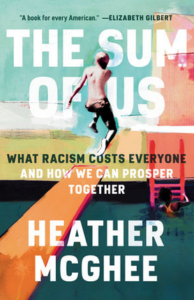by Anna Bentley
Since the onset of the COVID-19 pandemic, there has been so much individual and collective loss. In one way or another, all of us have grieved or are still grieving the loss of something — from loved ones, to the sudden disruptions in school and work, to the plans we had for our lives that didn’t include a pandemic. Perhaps all of us hoped early on that we would “defeat” COVID or “get back to normal,” but now we’re realizing we’re going to have to adapt to a new kind of future. How do we move forward while also acknowledging each other’s grief and loss?
When thinking of this question, I’m inspired by Dr. Shawn Ginwright’s The Future of Healing: Shifting from Trauma Informed Care to Healing Centered Engagement. How can we create environments for well-being in our communities and in our work here at OSU in the midst of COVID-19, the climate crisis, racial injustice, and our personal hardships? Here are a few insights inspired by Ginwright’s piece and my own lived experience that help me reconcile how I can look forward to the future without glossing over the very real suffering that so many of us are experiencing.
- We can experience grief and joy at the same time. Human beings are complex, and we’re capable of experiencing hope, joy, inspiration, and fulfillment in the midst of great loss. We don’t need to ignore or forget about our grief in order to experience joy. In the Academic Success Center & Writing Center, one way we’ve made space for this at work is by having multiple intentional conversations about how we’re feeling with the return to campus. I think we all have felt some combination of excitement, nervousness, and confusion about in-person activities at OSU. For me, talking about this openly validated my feelings, helped me process some of my grief, and made room for me to enjoy working on campus again.
- Individual and collective healing are interconnected. We can’t create and sustain environments for well-being when we’re consistently overwhelmed, burned out, and not present. We have to do our own inner work to process our emotions and experiences so that we can support our students, work to dismantle oppressive systems, and create environments for well-being. Just like our individual well-being impacts the spaces and communities of which we’re a part, the well-being of our community can create space for our individual healing. I think about what that looks like for me in the context of OSU. How does the way I show up to work impact the well-being of my colleagues, campus partners, and the spaces I occupy? Where are the groups and spaces on campus where I feel safe and reenergized and that promote my healing? In what ways can our department expand how we support students’ well-being and create spaces where everyone feels safe, celebrated, and empowered and knows that they belong?
- Designing inclusive environments for well-being requires collaboration. If we’re going to create environments for well-being where everyone belongs and feels safe, we need to work together, and we’ll need everyone’s hopes, dreams, ideas, and imagination. In order to do that well, we need to practice collaboration on a regular basis so we can further develop those skills. We collaborate frequently in the ASC & Writing Center, from engaging with the Student Affairs Priority to writing blog posts like this one. For this blog, collaboration looks like meeting as a team to discuss ideas for topics, deciding together who will be writing and who will be a “writing buddy,” and meeting with our writing buddies to gather feedback on drafts. Collaboration is a practice that requires learning and unlearning, humility, confidence to share our voice, openness to listening and receiving, and a willingness to redistribute power. Collaborating daily on different projects, big and small, gives us opportunities to continuously cultivate those skills.
Dr. Shawn Ginwright’s piece invites me to consider my role in creating conditions for well-being at work and in my community so that we can build a bright and more equitable future. What helps you hope for and imagine a bright future in the midst of great hardship? What does collaboration look like in your department or circles outside of work? I’d love to hear your ideas in the comments.





